Memorialization
Communities around the world have created monuments to commemorate the Holodomor. Some notable examples are included below, as well as a link to a database of monuments in Ukraine.

A database of Holodomor monuments in Ukraine was created by the Ukrainian Canadian Research and Documentation Centre on the basis of information collected by Vitalіy Ohienko, senior scholar at the Ukrainian Institute of National Memory in Kyiv. The website contains 457 photos of monuments from 17 oblasts in Ukraine.
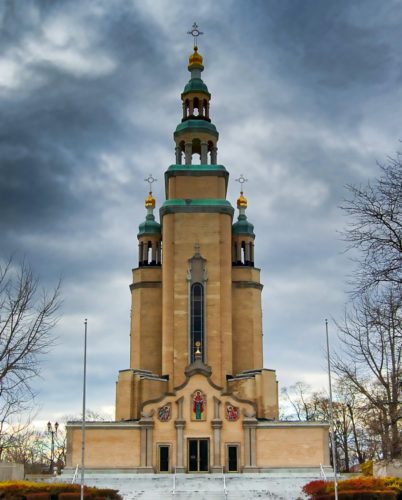
Bound Brook, New Jersey
Yurii Kodak, Architect
The Great Famine and its victims occupied a central place in the memorialization project of St. Andrew Memorial Church at Bound Brook, New Jersey. Planned by the prominent architect Yurii Kodak, the church was to be a symbol of Ukrainian church architecture, built in the Ukrainian baroque style. In 1963, the marking of the thirtieth anniversary of the Great Famine at Bound Brook was attended by thousands of participants.
Below is an article by Dr. Frank E. Sysyn about the leading role of the Ukrainian Orthodox Church in the USA in forming and cultivating Ukrainian diaspora memory and memorialization of the Holodomor. Also reproduced here are articles dealing with the Holodomor that appeared in Ukrains’ke pravoslavne slovo (UPS), the news organ of the Church, in the years 1953, 1958, 1963, 1964 and 1965. The materials shed light on the degree to which the Famine was an issue of importance well before the 1980s.
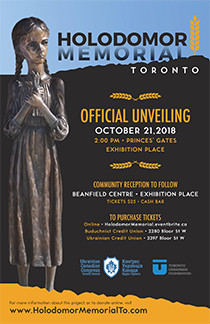
Toronto
Holodomor Memorial Parkette
Brown and Storey Architects Inc.
Toronto’s Holodomor Memorial Parkette was unveiled on October 21, 2018, and features the iconic sculpture “Bitter Memories of Childhood” created by Ukrainian designer Anatoli Haidamaka and sculptor Petro Drozdowsky. The parkette is adjacent to the Princes’ Gates, and is a space to reflect on the tragic events of the past and to foster aspirations for a just and humane society. The unveiling was attended by distinguished guests including Canada’s Minister of Foreign Affairs Chrystia Freeland, Mayor of Toronto John Tory, the First Vice-Prime-Minister – Minister of Economic Development and Trade of Ukraine Stepan Kubiv, Consul General of Ukraine in Toronto Andriy Veselovsky, and MP James Bezan. The parkette is an initiative of the Ukrainian Canadian Congress, Toronto Branch.
For more information on the unveiling ceremony, please visit the Ukrainian Canadian Congress, Toronto Branch website:
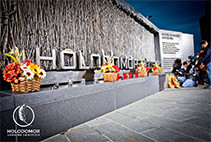
Washington
National Holodomor Memorial
Larysa Kurylas, Design Architect / Sculptor
DESIGN STATEMENT
The focal point of the Holodomor Memorial in the capital of the United States of America is a monumental bas-relief bronze sculpture entitled “Field of Wheat”.
Wheat was selected as a theme not only because its confiscation led to so many millions of innocent deaths but also because wheat is one of the few associations, if any, that Americans make with Ukraine.
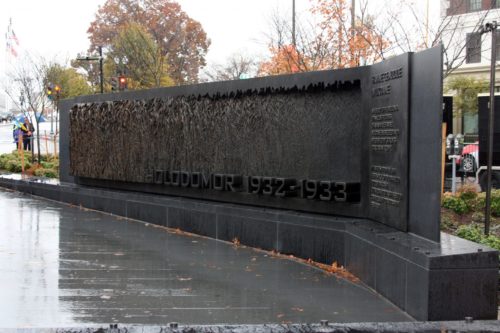
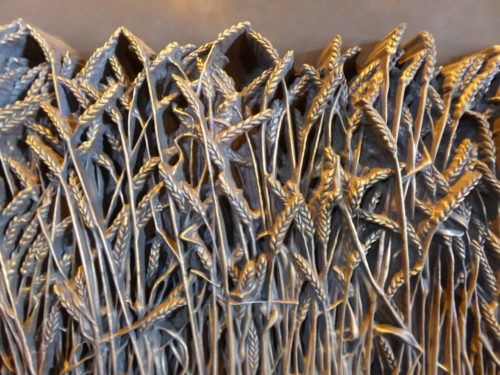
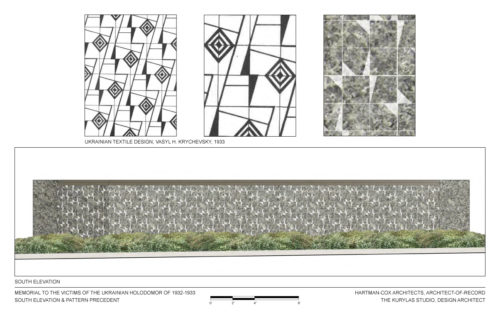
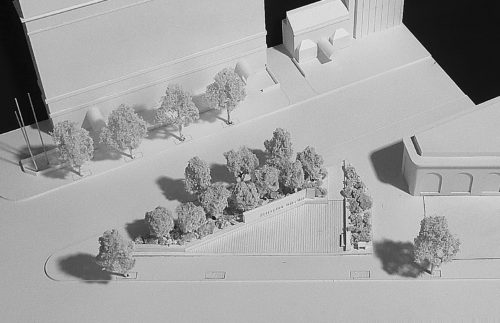
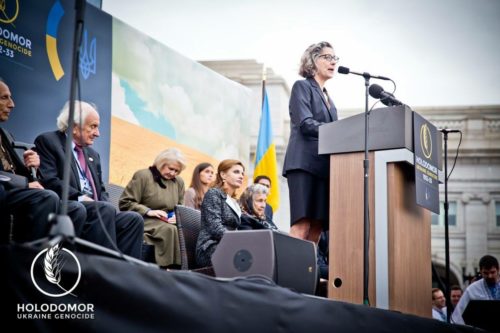
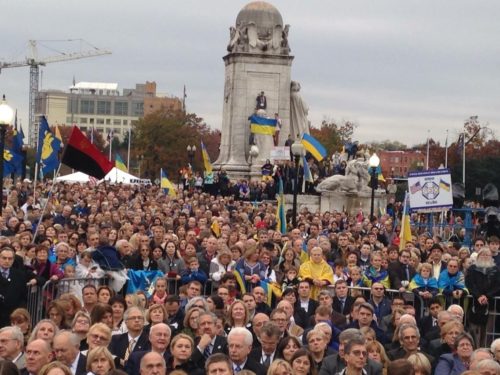

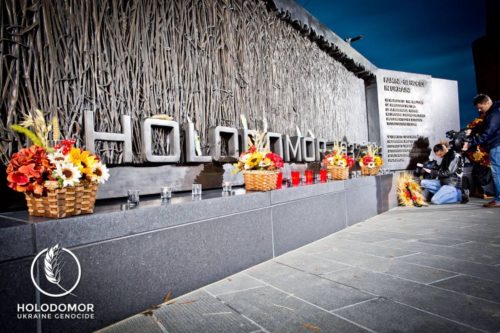
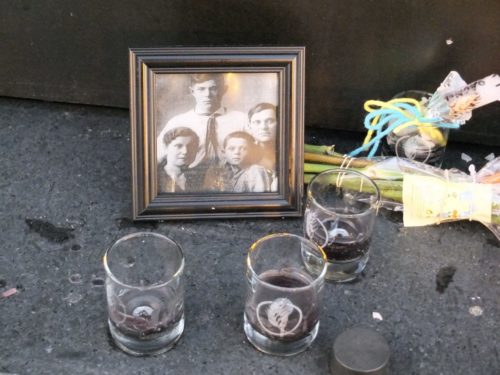
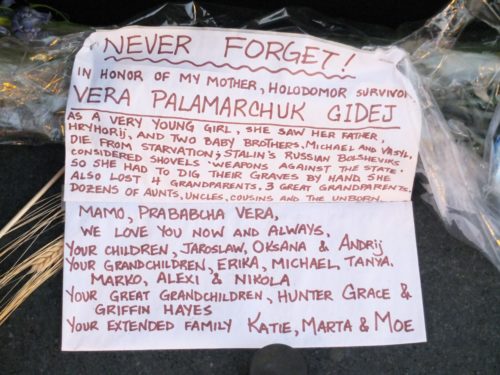
The depiction of wheat is not static. Across 30 feet, highly articulated wheat heads and stalks eventually fade away and recede deeply into the background, thereby expressing the transition from harvest bounty to famine deficit. Simultaneously with the disappearance of wheat, the phrase “HOLODOMOR 1932 – 1933” steadily emerges. The haunting negative space of the sculpture is intended to convey the willfulness and irony of the famine, forcing viewers to fathom the inhumanity of using wheat as a political weapon in what was once the “Breadbasket of Europe”.
Incorporated directly into the sculpture, adjacent to the negative space, a dedication panel reads: “Famine-Genocide in Ukraine: In memory of the millions of innocent victims of a man-made famine in Ukraine engineered and implemented by Stalin’s totalitarian regime.”
The “Field of Wheat” sculpture is placed within arms reach. This encourages a more personal connection to the memorial through touching and burnishing of the bronze surfaces. It is elevated on a granite wall which grows in height as the site slopes down to the west. The configuration of the wall responds to the triangular geometry of the site, alternately following the diagonal angle of Massachusetts Avenue and the grid of F Street. A bench integrated into the western end of the wall allows for contemplation of the “Field of Wheat” sculpture against the background of DC landmarks such as the Post Office Museum and Union Station.
As befits the site, the “Field of Wheat” sculpture is primarily oriented to the more important street -- Massachusetts Avenue. It is placed closer to the western end, where the triangular site is widest, not only to distance it from the very busy intersection of North Capitol Street, Massachusetts Avenue and F Street, but to allow for larger commemorative gatherings. The memorial plaza is paved in furrowed slate having a linear texture evocative of barren plowed fields. Here, the sculpture does not interrupt the site lines of Massachusetts Avenue, intentionally imparting a lower profile and restrained character to the memorial.
A wide brick sidewalk connects the memorial plaza to F Street where a wall of granite panels, attached to the back of the bronze sculpture, mediates between the Holodomor Memorial and sidewalk cafes across the street. The panels are etched in a geometric pattern derived from a folk-inspired design by Vasyl Krychevsky in 1933. Use of the design bespeaks of the attack on Ukrainian culture – a parallel goal of the Holodomor. The pattern was also selected for its vaguely barbed character, alluding to the Ukrainian border which was deliberately sealed by the government at the peak of the Holodomor.
Staggered native purple–leafed Redbud trees create a distinctive and somber backdrop for the “Field of Wheat” sculpture, in contrast to the surrounding street trees and drawing attention to the memorial from far away. Two types of native Nandina Domestica shrubs, selected for hardiness and year-round interest, are interspersed among the trees and occupy the rain garden, designed to capture all storm water runoff at the western edge of the site. The shrubs have white flowers and develop red berries reminiscent of “kalyna” -- so prominent in Ukrainian folklore.
In the positive-to-negative treatment of the “Field of Wheat” sculpture, in the arrangement of elements on the site and in the basic horizontality of the whole, the intent was to create a subtle yet powerful memorial befitting the memory of the millions of victims who perished in the Holodomor. The memorial site is equally designed to allow for contemplation by a single person, a few individuals, or an entire group of people. A nighttime image comes to mind: hundreds of candles flickering on the wall and a gathering of people solemnly singing “Vichnaya Pamyat” -- “Eternal Memory”.
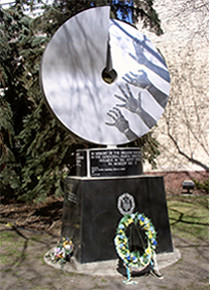
Edmonton
Holodomor Monument
Ludmilla Temertey, Designer
The first public monument in Canada to honour the victims of the Holodomor was unveiled in Edmonton in 1983 to mark the 50th anniversary of the Famine. The monument is located in front of the Edmonton City Hall and was sculpted by Ludmilla Temertey. The sculpture of a large broken circle of cold grey metal emblazoned with skeletal hands memorializes the victims of the Famine.